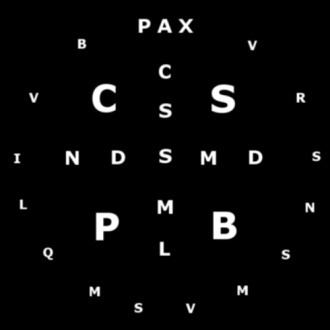 | ||
Vade retro satana ("Go back, Satan" or "Step back, Satan") is a Medieval Catholic formula for exorcism, recorded in a 1415 manuscript found in the Benedictine Metten Abbey in Bavaria; its origin is traditionally associated with the Benedictines.
Contents
In current Catholic tradition, the formula (sometimes reduced to the vade retro verse) is used to repel any possible evil thing or happening, as a "spoken sacramental". The initials of this formula (VRSNSMV SMQLIVB or VRS:NSMV:SMQL:IVB) have often been engraved around crucifixes or Catholic Saint Benedict Medals at least since 1780.
The phrase vade retro satana (often spelled vade retro satanas, or sathanas) is also used as a witty or scholarly prose device, dissociated from its religious implications, to express strong rejection of an unacceptable (but possibly tempting) proposal, or dread of some looming menace. Namely, in the sense of "do not tempt me!", "I will have nothing to do with that", "will someone deliver us from that", and so on.
Text
The Latin text says:
Crux sacra sit mihi lux / Non draco sit mihi duxVade retro satana / Numquam suade mihi vanaSunt mala quae libas / Ipse venena bibasIn approximate translation:
"Let the Holy Cross be my light / Let not the dragon be my guideStep back Satan / Never tempt me with vain thingsWhat you offer me is evil / You drink the poison yourself."Origins and history
The verse Vade retro satana is similar to a phrase spoken by Jesus to Peter in the Vulgate New Testament, Gospel of Mark 8:33: vade retro me satana ("Go away from me, Satan!"[Mark 8:33]).
The exact origin of the passage is not clear. The passage came to general attention in 1647, when women who were prosecuted for witchcraft declared that they had been unable to do harm where there was a cross, and the St. Michael's Benedictine Abbey in Metten was particularly exempt from their influence. A search of the monastery turned up crosses painted on the walls with the formula's initials. The meaning of those letters remained a mystery for some time, until the complete verses were found in a manuscript dating to 1415 in the abbey's library, next to an image of St. Benedict. The same formula was later found in an Austrian manuscript from 1340/50.
The formula received the approval of Pope Benedict XIV, and became part of the Roman Catholic ritual in 1742. The formula's popularity grew considerably in the 19th century, mainly due to the efforts of Leo Dupont. According to H. C. Lea (1896), "As a rule ... it suffices to wear [the medal] devoutly, but, if some special favor is desired, it is advisable on a Tuesday to say five Glorias, three Aves and then three more Glorias to secure the protection of St. Benedict."
The Vade Retro Satana remains part of the Roman Catholic ritual following the 20th-century revision of the ritual and its final promulgation in 1999 via De exorcismis et supplicationibus quibusdam.
